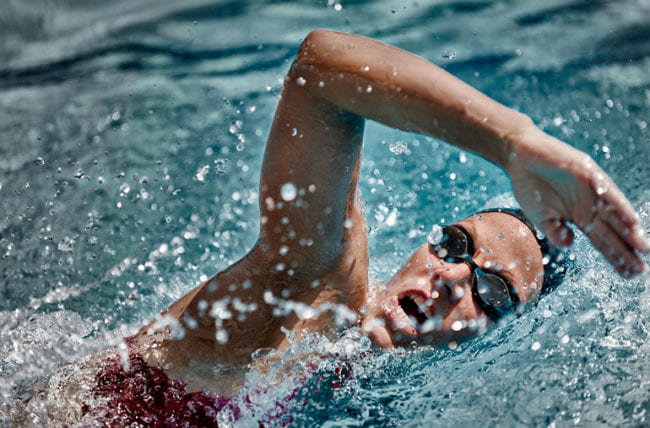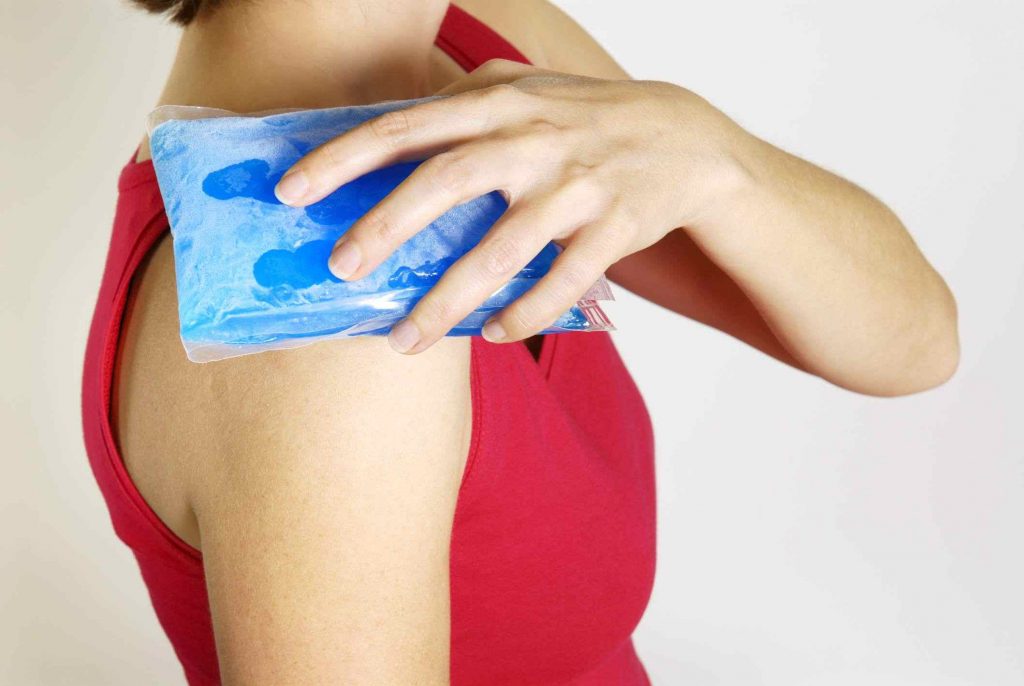Swimmer Shoulder: Symptoms, Signs, Treatments, and Stretches Arm
Swimming has become a trendy hobby, and it is likely that people will start experiencing shoulder pain in their bodies or shoulders compared to other activities.
As very few of you know that our shoulders are intricate organs of the body. It allows an extensive motion range. In addition, swimming has unique features as the shoulders help proper body weight against water resistance.
Therefore, maximum mobility and flexibility are needed to ensure optimal swimming performance. Sometimes these changes cause shoulder ligamentous laxity.
Did You Know? Almost 80 percent of complaints from swimmers attributed to shoulder issues
What is Swimmer’s Shoulder?
Swimmer’s shoulder can lead to pain or tenderness in the bicep or supraspinatus tendon and discomfort when the arm is forcefully moving through a certain angle that starts near your elbow, into the upper arm position.

Things to Remember
You must know a few things when participating in aquatic sports. For one thing, as vital as exercising, it’s also just as important not to overdo it and put your body at risk of injury. Also should have proper swimming tools including a pair of swimming goggles.
In addition, there are many conditions involved with swimming. Such as:
- Poor stroke technique
- Fatigue
- Previous injury
- Hypermobility
- Ligament and capsule damage
- Tendonitis and rotator cuff impingement
- Cartilage damage
Etiology of Swimmer’s Shoulder
Most musculoskeletal problems are classified according to their onset by macro trauma or microtrauma. A sudden onset condition caused by a single incident is called macro trauma.
Macro trauma is caused by:
- External factors and the patient often has tissue pathology causing associated impairment.
- Range of motion strength.
- Swimming shoulders is a condition that progressively occurs because of repetitive activity.
Microtrauma has multiple etiological features and etiologies and could arise from intrinsic or external factors.
What causes swimmers’ shoulder pain?
In the case of the swimmer, whose shoulder is a result of rotating joints, he can move his shoulder. Swimmers’ shoulder causes wear to the body by repeatable movement of the shoulder muscles resulting in muscles and joints deteriorating and muscle imbalance.

Training errors is a term used to define an extensive range of mistakes in both swim training and muscle fatigue, which is too much pressure on the part of your shoulder.
It tends to happen when you haven’t properly warmed up or limbered up for your exercises beforehand. Therefore, it’s vital that before any activity, you warm up the parts of your body intended for the workout to help prevent injury!
Swimmer’s Shoulder Symptoms
- Decrease In Movement:
The most well-known swimmer’s shoulder side effects remember a decreased scope of movement for your shoulder contrasted with your other shoulder.
- Inflamed BICEP:
Some common characteristics of swimmers’ shoulders include inflammatory BICEP and supraspinatus tendon, causing shoulder impingement syndrome.
- Tendon Irritation:
The more you swim during one period, the more terrible your aggravation will turn into. It is tendon irritation of the supraspinatus and biceps shoulder muscles.

Other symptoms may seem insignificant at first glance, but if you’re prone to swimmer’s shoulder and train or compete often, pay attention to them even if they don’t hurt that much.
These symptoms are often misdiagnosed as something else when there is no pain, so watch out!
For example, if you feel pain when doing swift arm movements in swimming, your shoulders and arms muscles might be asymmetrical.
How to diagnose Swimmer’s Shoulder
The intensity of proper diagnosis will influence which treatment will be most efficient.
Visit your physiotherapist so he/she diagnose the injury accurately. During these procedures, your doctor will elevate your hand over your head in a maximally high position. Then, when the pain comes, your rotator cuff muscles can become pinched, and a test for a positive result.
Swimmers’shoulders may also become suspicious. You may start treatment for swimmers’ shoulders after consulting with an ophthalmologist or your ophthalmologist. X-rays will be effective if you see the shoulder bone.
How can prevent the Swimmer’s shoulder?
First, you should take basic swimming lessons; second, ensure you understand the difference between normal muscle soreness and severe pain to prevent a similar injury. Then, ask a friend or the coach to evaluate your body and arm position.
If symptoms appear unusual or nonnormal, consider factors including changes in the intensity of stroke mechanics and distance. When you detect potential problems early on, you can get better recovery.
Another way that can help reduce shoulder injuries. Also, do it with your left hand and keep your body elevated in the water.
Swimmer Shoulder Treatment
Identifying the affected muscles and tendons and determining the severity of the problem will provide a more effective treatment plan. Ideally formulated treatments include:
- Use ice: Apply directly onto your shoulders for around 30 minutes after training.

- Medication: Trying steroid injections to reduce inflammation can be an excellent way for you to feel efficient again. Or apply several times a day after the injury to relieve inflammatory conditions.
- Relax your body: The result could be complete rest without swimming for 24 or 48 hours. Or perhaps you can jump; however, decrease yardage as you can never swim back or push the arm. Wait until you feel no pain and you’ve started swimming again.
- Make a pre-hab routine: The sport involves time and energy to swim. Two-day and four-day meets and meter and meter events demand much more from us.However, preventing injuries can be avoided by spending an extra few minutes a night before a workout training your body to be more comfortable swimming, which is more likely to be injury-free than a swimming activity.So make the practice of the first day of living habitual. Routines.
- Improve your t-spine mobility: In swimming, we know it is essential to have flexible shoulders, pec, ankles, or hip. We’ve learned that this is drilled from day one through a multitude of stretching and arm/leg swings we do from age groups to age levels.

- Physical therapy: A physical therapy program is typically advisable to help you improve your Swimmer’s shoulders by completing a physical therapy program.
The physiotherapeutic and orthopedic specialist can stretch the rotator muscle manually because it may seem impossible.

- Shoulder external rotators: Actually the pectoral muscles, posterior rotator cuff muscles, and thoracic spine are the three biggest common factors involved in tightness or stiffness of the shoulder and require correcting.
As a swimmer, your shoulder muscles are essential in helping you to swim faster and better. Doing these stretches will also help your rotator cuff muscles stay strong; without having strong rotator cuff muscles, you may feel pain and discomfort in the joint.In addition, rehabilitation exercises will strengthen weak muscles such as; external shoulder rotators.
Frequently Asked Questions
What is the main reason for swimmers’ shoulders?
Repetitive joint use lead to Swimmers’ shoulder irritation, tears, and scars. It includes pain and restricted movement.
How to ensure relief from the swimmer’s shoulder?
Those suffering from this type of pain might experience muscle weakness or fatigue, along with a reduced range of motion in their shoulder. They must start rehab exercises. These will strengthen the rotators to ensure long-lasting relief.
How long does Swimmer’s shoulder last?
Swimmers’ shoulder recovery period. Shoulder impingement usually lasts between 6 months and three years to heal completely. However, shoulder impingement can often last as long as one year for more severe conditions.
Can you swim with the Swimmer’s shoulder?
A swimmer’s shoulder is conservatively using rehabilitation and correct stroke mechanics. Most swimmers will eventually recover properly from shoulder pain.
What is the most effective treatment?
The treatment includes: You should consult a physiotherapist to assess your injuries’ severity and quality before starting this stretching routine.
Bottom Line
Swimmers can prevent shoulder injury through adequate pre-season screening based on identifying impairment and training mistakes resulting in symptoms.
As a person who deals with Swimmers during the season, one must determine likely impairments or activity mistakes.
You know that each of your clients is at different stages in their path to their personal best, so listen to their feedback and work with them individually.
To determine where they might have gone wrong in their practices and how you can help them make improvements much faster than they thought possible.

